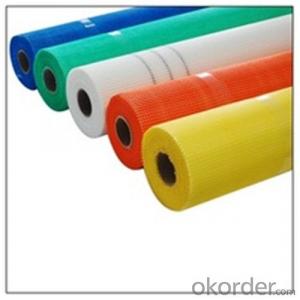Fiberglass mesh is a versatile material that has been increasingly used in the construction industry for its durability and strength. It is commonly used for plastering walls, which not only enhances the wall’s durability but also adds an aesthetic appeal. In this article, we will explore the benefits of using fiberglass mesh for plastering, its installation process, and some tips for a successful application.
Why Fiberglass Mesh?
Fiberglass mesh is made from woven fibers of glass, which gives it a strong and flexible structure. It is lightweight, resistant to corrosion, and can withstand extreme temperatures. These properties make it an ideal choice for plastering walls, especially in areas exposed to harsh weather conditions. Moreover, fiberglass mesh is non-conductive, which adds an extra layer of safety during the construction process.
Benefits of Using Fiberglass Mesh for Plastering
1. Enhanced Durability: The use of fiberglass mesh in plastering significantly improves the wall’s durability. It reinforces the plaster, preventing cracks and other damage that may occur over time due to weather or structural movement.
2. Resistance to Moisture and Corrosion: Fiberglass mesh is resistant to moisture and corrosion, making it suitable for use in damp or humid environments. It prevents the growth of mold and mildew, which can weaken the wall structure.
3. Improved Aesthetics: The mesh creates a smooth and even surface for the plaster, resulting in a more polished and professional appearance. It also allows for the creation of various textures and patterns, adding a unique touch to the wall design.
4. Increased Flexibility: Fiberglass mesh can be easily cut and shaped to fit the contours of the wall, providing a seamless finish. This flexibility also makes it easier to work with during the installation process.
5. Cost-Effective: Although the initial cost of fiberglass mesh may be higher than traditional plastering materials, its long-term benefits in terms of durability and reduced maintenance make it a cost-effective choice.
Installation Process
The installation process of fiberglass mesh for plastering involves several steps, which, when followed correctly, can ensure a successful application.
1. Preparation: The first step is to prepare the wall surface. It should be clean, dry, and free of any loose debris. Any cracks or holes should be filled and smoothed out before applying the mesh.
2. Application of Adhesive: A suitable adhesive is applied to the wall surface to ensure proper bonding of the mesh to the wall. The adhesive should be spread evenly and allowed to become tacky before applying the mesh.
3. Attaching the Mesh: The fiberglass mesh is then attached to the wall, starting from the bottom and working upwards. It should be pressed firmly into the adhesive to ensure a strong bond. Overlapping the mesh by at least 50mm is recommended to avoid gaps and ensure full coverage.
4. Plastering: Once the mesh is securely in place, the plaster can be applied. The plaster should be applied in thin layers, allowing each layer to dry before applying the next. This process helps to avoid cracks and ensures a smooth finish.
5. Finishing Touches: After the plaster has dried, any imperfections can be sanded down and the wall can be painted or finished as desired.
Tips for a Successful Application
1. Choose the Right Mesh Size: The size of the fiberglass mesh should be chosen based on the wall’s condition and the desired level of reinforcement. A smaller mesh is suitable for fine cracks, while a larger mesh is needed for more significant structural issues.
2. Ensure Proper Adhesive: The adhesive used should be compatible with both the fiberglass mesh and the wall material. It should also have a strong bonding capacity to ensure the mesh stays in place.
3. Proper Overlap: Overlapping the mesh by at least 50mm ensures full coverage and prevents gaps, which can lead to cracks and other issues.
4. Smooth Application: Applying the plaster in thin, even layers helps to avoid air bubbles and ensures a smooth finish.
5. Patience: Allowing each layer of plaster to dry before applying the next is crucial to avoid cracks and ensure a durable finish.
In conclusion, using fiberglass mesh for plastering is an excellent way to enhance the durability and aesthetics of your walls. By following the proper installation process and keeping these tips in mind, you can achieve a professional and long-lasting result. So, the next time you’re working on a construction project, consider the benefits of incorporating fiberglass mesh into your plastering work.

